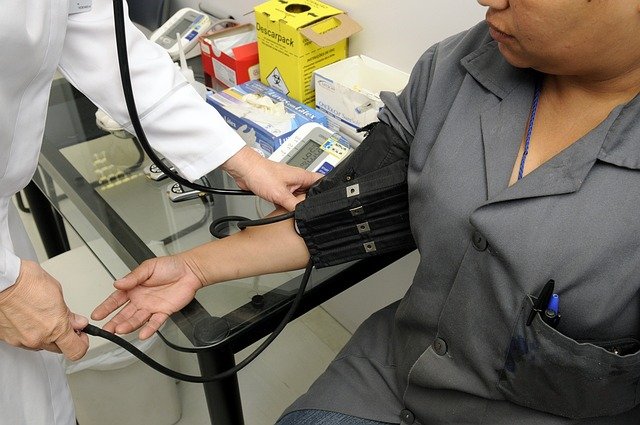The Critical Importance of Quality Medical Equipment in Healthcare Settings
In healthcare environments, the quality of medical equipment directly impacts patient outcomes, practitioner efficacy, and overall safety. From diagnostic devices to surgical instruments and laboratory apparatus, medical equipment serves as the foundational infrastructure upon which modern healthcare delivery depends. Healthcare facilities that prioritize high-quality supplies typically experience fewer device malfunctions, more accurate diagnostic results, and better patient care. The relationship between equipment reliability and healthcare outcomes is undeniable—when instruments function precisely as intended, medical professionals can focus on patient care rather than troubleshooting equipment issues.

Why Quality Supplies Are Vital in Medical Settings
Medical settings demand precision and reliability above all else. When healthcare professionals work with substandard equipment, the consequences can range from minor inconveniences to life-threatening situations. Quality medical supplies offer consistency in performance, which is crucial when making diagnostic decisions or administering treatments. For instance, calibrated monitoring devices ensure accurate vital sign readings, while properly manufactured surgical instruments maintain their integrity during procedures.
Additionally, high-quality medical equipment typically adheres to rigorous regulatory standards established by organizations like the FDA. These standards exist to ensure that devices perform as expected, maintain sterility when required, and pose minimal risk to patients and users. When facilities invest in quality-assured products, they also invest in compliance with these critical safety regulations, reducing liability and enhancing their standard of care.
The True Value of High-Quality Lab Equipment
Laboratory equipment represents a significant investment for medical facilities, but the value extends far beyond the initial purchase price. Quality lab equipment delivers consistent results, reduces the need for repeat testing, and extends operational lifespan—all factors that contribute to long-term cost efficiency. When considering the total cost of ownership, premium equipment often proves more economical than cheaper alternatives that require frequent replacement or calibration.
Precision in laboratory testing directly affects patient care decisions. When diagnostic equipment delivers accurate, repeatable results, clinicians can confidently develop treatment plans based on reliable data. Conversely, inconsistent or inaccurate test results can lead to misdiagnosis, unnecessary treatments, or delayed interventions. The reliability of lab equipment therefore directly impacts not just operational efficiency but patient outcomes and safety.
Furthermore, quality lab equipment typically offers better ergonomics and user-friendly interfaces, reducing operator fatigue and human error. This enhances workplace satisfaction while simultaneously improving the accuracy of results—a dual benefit that further underscores the value proposition of investing in premium laboratory solutions.
How Premium Medical Supplies Enhance Accuracy and Safety
Premium medical supplies incorporate advanced materials, precise manufacturing processes, and thoughtful design that collectively enhance both accuracy and safety. In imaging equipment, for example, higher-quality components deliver clearer images with better resolution, allowing for more accurate interpretation and diagnosis. Similarly, premium monitoring equipment provides more reliable data with fewer artifacts or false readings, giving healthcare providers confidence in their clinical assessments.
Safety features are typically more robust in quality medical supplies. From equipment with automatic shut-offs to prevent overheating to instruments designed with user safety guards, premium products often incorporate multiple layers of protection for both patients and practitioners. This focus on safety extends to materials selection as well, with higher-grade supplies utilizing biocompatible materials that reduce adverse reactions and infection risks.
Additionally, premium medical supplies often feature better infection control characteristics. Equipment designed with smooth surfaces, minimal seams, and materials resistant to microbial growth helps facilities maintain stringent infection prevention protocols. In an era where healthcare-associated infections pose significant challenges, these design considerations represent a crucial advantage of quality medical equipment.
The Hidden Costs of Low-Quality Medical Equipment
Choosing budget-friendly medical equipment often reveals hidden costs that far exceed the initial savings. Low-quality devices typically have shorter lifespans, requiring more frequent replacement and increasing long-term expenditure. Additionally, substandard equipment generally demands more maintenance, creating ongoing operational costs and workflow disruptions when devices require servicing or calibration.
Perhaps most significantly, equipment failures or inaccuracies can lead to serious clinical consequences. Misdiagnosis resulting from imprecise testing equipment may necessitate repeated procedures, delay appropriate treatment, or lead to inappropriate interventions—all of which increase costs while potentially compromising patient outcomes. Legal and regulatory penalties resulting from equipment-related adverse events represent another potential financial burden associated with inferior supplies.
Staff productivity also suffers when working with unreliable equipment. Clinicians and technicians forced to compensate for equipment limitations or troubleshoot frequent malfunctions experience increased stress and reduced efficiency, ultimately affecting the facility’s capacity to serve patients effectively.
Evaluating Medical Equipment Quality: Key Considerations
When selecting medical equipment, several critical factors help determine true quality beyond price points. Regulatory compliance serves as a baseline indicator—equipment should meet relevant standards from organizations like the FDA, ISO, or CE marking requirements. Manufacturer reputation also provides valuable insight; established companies with proven track records typically maintain more consistent quality control processes.
Material quality significantly impacts equipment performance and longevity. Medical devices constructed with medical-grade materials specifically designed for healthcare applications generally outperform those made with standard commercial components. Similarly, precision engineering and manufacturing processes ensure that equipment functions within the narrow tolerances required for medical applications.
Warranty terms often reflect a manufacturer’s confidence in their products. Comprehensive warranties covering extended periods typically indicate higher-quality construction and expected longevity. Finally, post-purchase support—including access to service technicians, replacement parts, and software updates—represents a crucial component of equipment quality that extends beyond the physical device itself.
Conclusion
Quality medical equipment represents an essential investment in healthcare delivery excellence. While premium supplies may require greater initial expenditure, they typically deliver superior clinical outcomes, enhanced safety, greater reliability, and better long-term value. Healthcare facilities that prioritize equipment quality position themselves to provide better patient care while simultaneously achieving greater operational efficiency and cost-effectiveness. In medical settings where precision and reliability directly impact human lives, quality equipment isn’t merely a luxury—it’s a necessity that forms the foundation of effective healthcare delivery.
This article is for informational purposes only and should not be considered medical advice. Please consult a qualified healthcare professional for personalized guidance and treatment.




